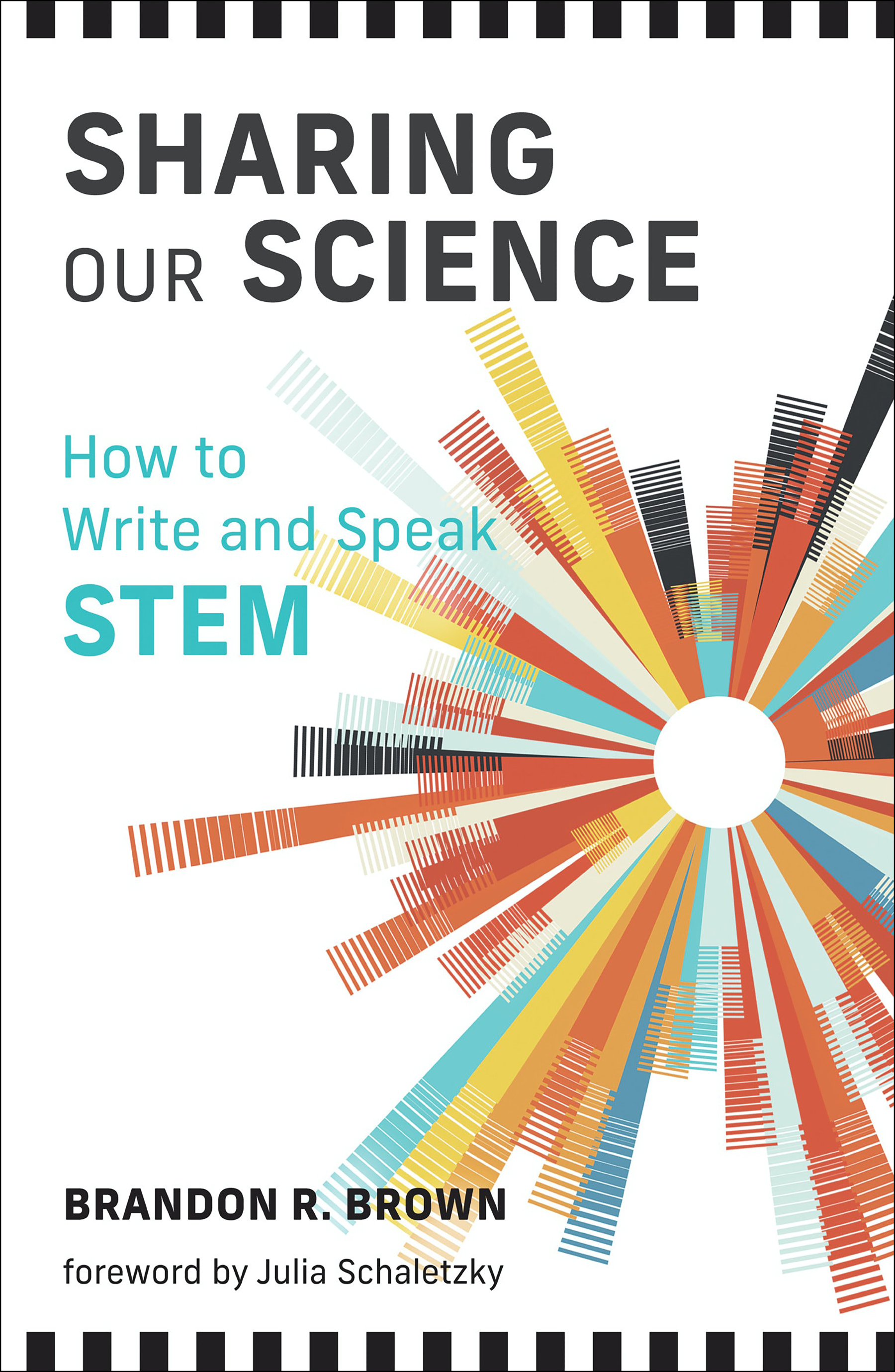By Ray Bert
Sharing Our Science: How to Write and Speak STEM, by Brandon R. Brown. Cambridge, Massachusetts: The MIT Press, 2023; 316 pages, $26.95.
People, even or maybe especially very intelligent people, talk past — and write past — one another all the time. This has all manner of day-to-day consequences in everything from friendships to business, marriages to marketing, entertainment to geopolitics. And, yes, of course science and engineering. Sharing Our Science is here to help.
Physics professor, writing teacher, and author Brandon R. Brown neatly summarizes what he has tried to accomplish with his book, after having failed to identify one already in existence for someone with whom he was working. “I had hoped for a tidy volume that spoke to fundamental principles,” Brown writes. “That’s what I wanted to share with the engineer: core concepts that could guide them through the unique challenges, pitfalls, and opportunities of sharing technical work with various audiences.”
Brown has an uncommonly diverse writing background that makes him ideal for the task he set for himself. In addition to doing a full year of postdoctoral science journalism training, he has also worked as a reporter, a university administrator, and a writing coach as well as writing scientific papers, grant proposals, magazine articles, and two books prior to Sharing Our Science.
The result of all that hard work is an effortless writing style that shows the reader how to write clearly and effectively at the same time as he is telling the reader how to do so. Brown also understands well that the writing technical professionals do is often classified as either “scientific writing” (meant for consumptions by peers) or “science writing” (aimed at a broader, less technical audience). But he notes that rather than address them separately, “I’m going to mix the two. Fundamental considerations greatly benefit both, and importantly, I’ve learned that a lot of tech workplace writing lives somewhere between the two.”

As to the book’s structure, Sharing Our Science offers four early chapters that, though referencing science frequently, offer foundational advice useful to any kind of writing. In addition to the expected attention to structure, focusing on the audience, and effective editing, Brown covers more story-oriented concepts such as dramatic tension.
Four middle chapters cover, in Brown’s words, “topics specific to our nerdy types of work.” Some of these include writing in English as a second language, acronyms and jargon, and avoiding common errors such as overuse of prepositional phrases and unnecessarily repetitive caveats. Three additional chapters cover topics relating to speaking, presentations and slide decks, and considerations specific to the size and type of audience.
One final chapter speaks especially well to Brown’s understanding of the challenges faced by those communicating science, technology, engineering, and mathematics ideas. Titled “Communicating Calamity,” it is a meditation of sorts, acknowledging and offering advice when writers “must sometimes broadcast information as unwelcome as it is technically complex.” From climate change to pathogens to toxins in our environment, there have rarely, if ever, been more dangers that require scientific explanations — just as there have rarely been more potent headwinds to ensuring that good scientific information actually makes it to the public and the leaders and policymakers who need it. But a wise approach can help. “A spoonful of sympathetic perspective,” Brown writes, “can better move an audience to acceptance, understanding, and even action than can a dry harangue.”
Straightforward, funny, endlessly practical, and simply a pleasure to read, Sharing Our Science might just deserve to become the Elements of Style of the STEM crowd.
This article is published by Civil Engineering Online.



